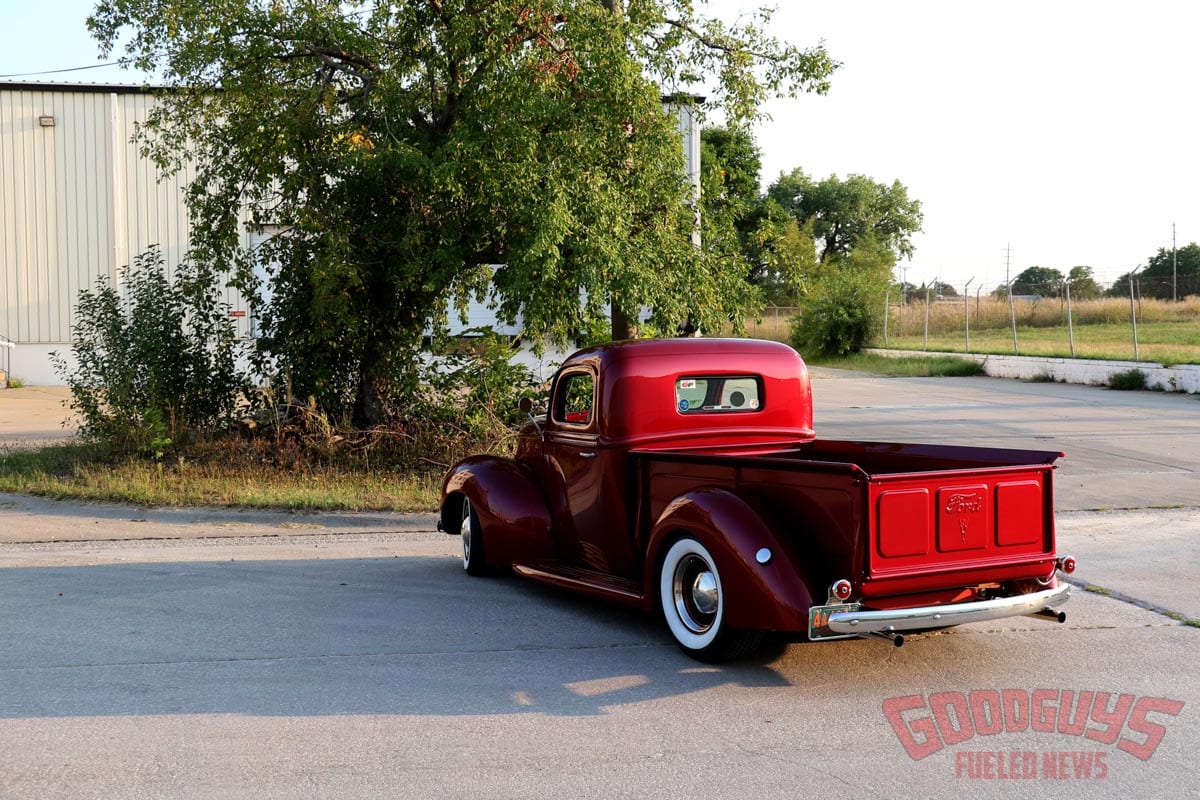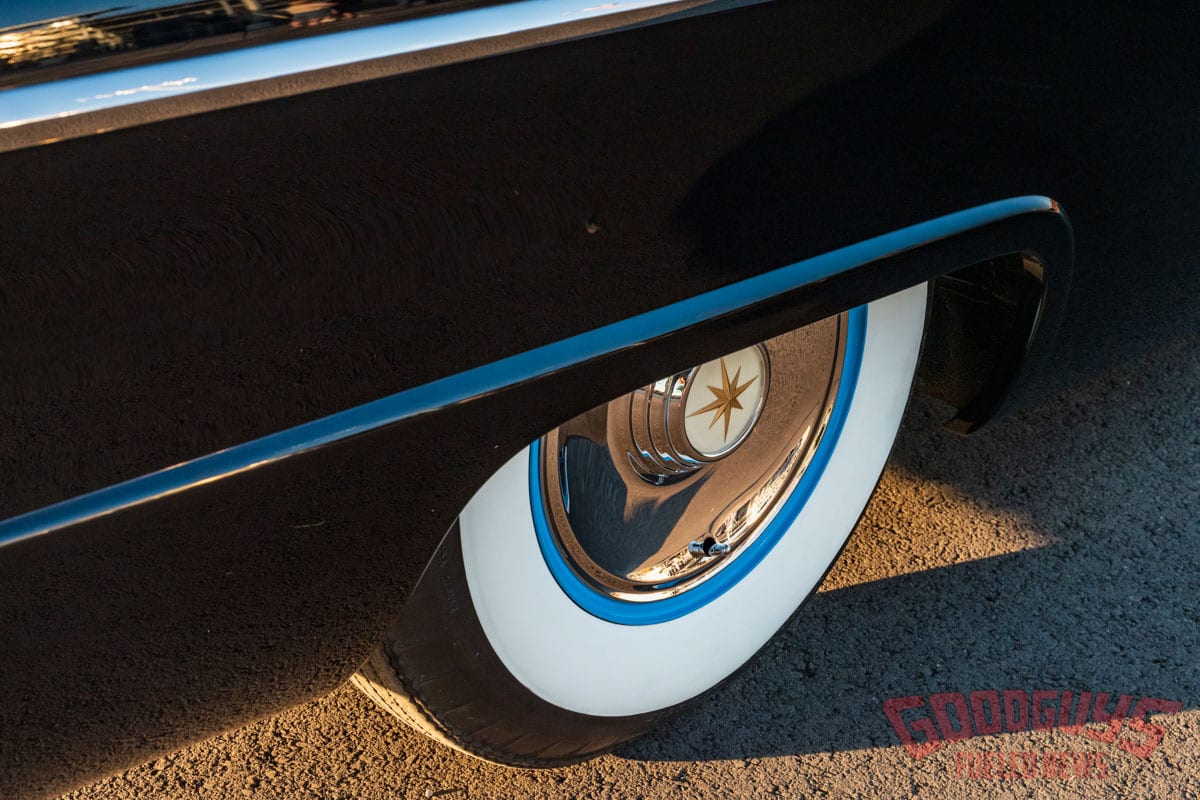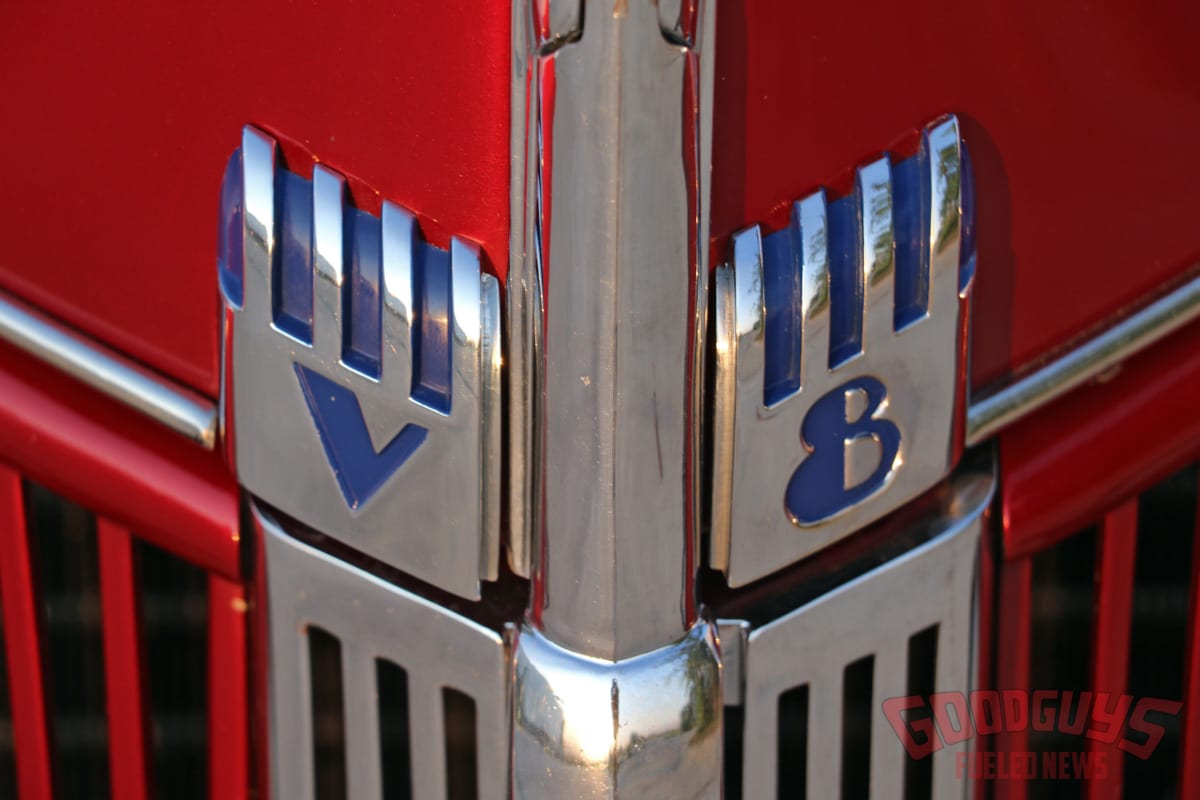Sure Shot – Tips on Photographing Your Car
From Virtual Car Show coverage, to Road Rules features, to Get in Your Garage content, the Goodguys media team has been using a lot of photography this year that’s generated by you, our members and readers. It has been both a fun and educational experience for us – we enjoy interacting with our members and sharing the projects they’re working on and driving. It’s even more fun when we have great photos!
The good news is that technology has advanced to the point where most of us are carrying exceptionally capable cameras in our pocket every day in the form of a smart phone. Depending on the age and model of your phone, it can likely create photos that will reproduce quite well both online and in print. Many photos we use from our members come from cell phones.
That said, a dedicated camera – whether it’s a point-and-shoot or a DSLR – is a great way to step up your game. You get the benefit of superior lenses and higher resolution, which will allow for photos that can be enlarged more without losing sharpness. With a little practice and education, a good camera can be a great resource for taking photos that go beyond mere snapshots.
Whether you’re using a phone or a stand-alone camera, we thought we’d offer some tips and suggestions for photographing your car. The advice we offer here is aimed primarily at photo novices and casual enthusiasts using available outdoor light. You can likely find professionals who successfully break many (or most) these rules, but that’s why they’re pros – they know the techniques and tricks getting the best shots out of any situation. These will give you a good start in capturing a sure shot of your car or truck.
Think About Light
The first thing anyone learns in their first photography class is that the word photography literally means “light writing.” What you used to capture on film, and now capture on digital pixels, is light as it reflects off your subject. When you consider it that way, you’ll learn to start thinking about where your light source is. And unless you’re a seasoned pro with high-end lighting equipment, your primary light source is likely to be that glowing orb in the sky – the sun.
- Sun is your friend 90-percent of the time, so use it to your advantage.
- You’ll see that this Bronco photographed much better shooting the passenger side with the sun directly on it (left) as compared to the backlit driver’s side (right).

Many of us seek out a shade tree when attending a car show but getting a good photo of your ride under a tree is always a struggle. You’ll likely end up with blotchy sun spots and shadows or part of your ride shaded and the rest in the sun. The uneven light doesn’t do the photo of this ’57 Chevy any favors.
When photographing your car, you’ll generally want the sun behind or beside you. Watch the shadows to get a good sense of which direction the light is coming from. You’ll also want to watch and make sure those shadows – from you, bystanders, or surrounding objects – aren’t creeping onto the car. The goal is to get even, consistent light on the vehicle.

You can see better photos of Harve Evans’ ’40 Ford pickup by Clicking Here. We didn’t do it any favors in this image, shooting the shadow side so you can’t see its features or color very well. Note also the front wheels turned the wrong direction, and the less-than-inspired background.
You’ll often hear photographers refer to soft light or the “golden hour.” This is the evening or morning time when the sun is below the horizon, but the sky is still bright. This soft light is less harsh and can be more pleasing, with shadows greatly diminished. You sometimes get the same effect on days where light cloud cover or haze filters the sun.

Black vehicles are not easy to photograph. They’re more prone to show reflections of items nearby and are usually not ideal to shoot in direct sunlight. An overcast evening worked well when photographing this Mercury, and an isolated location made avoiding reflections much easier. Note how standing farther away from the car and zooming in to photograph it also helped separate it from the background.
When photographing in low light, shade, or at dawn or dusk, consider using a tripod. This allows you to use longer exposures while avoiding camera shake.
Reflections
Like shadows, reflections can be distracting. Look at the side of your car to see if the paint is reflecting nearby poles, buildings, people, or other distractions. This is especially noticeable on dark-colored vehicles. Parking lot lines can be a bad source of reflections, too, so we usually look for locations without those lines.

This is a pretty nice photo of Kyle Severin’s ’59 Impala, but it’s distracting to have white parking lot lines “growing” out of the car – and reflected in the door. Avoid these distractions and reflections when you can.
Size Matters
Most phones and cameras let you choose the resolution setting for your photos. Be sure to select one of the higher settings. Remember, a low-resolution image might look OK on your phone or work fine online, but we need high-resolution versions for the magazine. It’s always disappointing getting photos that look great on a computer but are too small to use in print.
Location, Location, Location
A photo in your driveway is OK, but doesn’t your car deserve a background where it can really look its best? Look at the feature photos in your favorite magazines – the cars are often shot in a cool, gritty industrial area, in front of an old barn or gas station, or with clean, open roads or scenery behind. When photographing in front of a wall or building, avoid parking right next to the structure. Separating your vehicle from the background makes it more of the focal point and helps it pop.

Speaking of background, give it a quick scan and make sure there aren’t any distractions behind your vehicle. Garbage cans, bright objects, trash on the ground, and other clutter can take attention away from your car. Also, make sure there are no poles or trees that look like they are growing or poking out from your car.

When choosing your location, remember to consider the light, too. Think about whether the setting you want to use will be better in the morning or evening, and then plan your shoot accordingly.
Close it Up
It’s understandable for you to open the hood or doors of your car when it’s being shown off at an event or judged, but close it up when you take photos! Open hoods and doors break up the lines and flow of your vehicle and are sure ways to get your photo passed over in favor of others.

Close ’em up! We know you want to show us all the cool stuff under the hood and inside, but don’t try to do everything in one photo! Close the doors, trunk, and hood when photographing the exterior of your vehicle, and then grab some separate shots of the engine and interior if you want.
Also, if the wheels of your vehicle are turned, make sure they are turned so the face of the wheel – not the tread of the tire – is toward the camera. It’s much more interesting for us to see.
Frame It
If you’re taking photos with your phone, turn it horizontal. It’s amazing that in less than a generation, we’ve gone from taking most photos horizontally to taking most of them in a vertical orientation, all because we tend to hold our phones vertical. Since cars tend to be long and horizontal, most car photos work best that way, too.

Take a step back and allow for some breathing room. One of our biggest pet peeves is photos where the front or back of the car is cut off. We want to see the entirety of the vehicle, so don’t cut off the bumpers.
Shooting a horizontal photo makes it easier to fit the whole car in the frame, too. We like complete shots, and we usually won’t use them if the front or rear of the car is cut off. Can’t zoom out far enough? Take a step or two back, or change your angle on the car so you can fit it all in. It’s better to have a little “breathing room” around your vehicle than to have a bumper or wheel cut off.
Move Around
It’s always good to get “safe” shots and standard angles, but don’t be afraid to try different compositions once you’ve captured your conventional shots. Get down low and see how things look. Crawl up on something and shoot down for a different perspective.
Shoot side profile shots and head-on shots. Shoot some zoomed-in shots from far away and some wide-angle shots from close up and see how that alters the look of the car. The great thing about digital photos is that you can delete what you don’t like, so take your time, walk around the car (or move it around) to try different shots. You never know when you’ll stumble onto an unexpected angle that looks great.

It’s usually good to start with “safe” shots, but don’t be afraid to change your perspective and try something different. High-angle and low-angle images can give your car a different and distinctive look.
Also, consider incorporating your background into the composition a little more. We’ve seen some great automotive photos where the car is not front-and-center. Sometimes putting the vehicle off center creates a more pleasing scene.

Details, Details
When photographing details in an engine compartment or interior, we usually look for “open shade” – the even, consistent light created by the shadow of a building or other structure. This eliminates harsh shadows that can come from direct sunlight. The shade from trees can sometimes work, just be sure to watch for bright spots where the sun peeks through.
- When shooting detail shots of the engine or interior, try to find even shade so that the sun doesn’t throw shadows that obstruct the subject. The photo of the black interior, shot in bright, uneven light, has a big steering wheel shadow on the seat, plus half the seat is in shadow. It’s also difficult to see any detail on the floor.
- By contrast, the red interior, photographed in open shade, shows a lot more detail with fewer shadow distractions.
In addition to standard interior and engine photos, try photographing other interesting details on your car – emblems, taillights, wheels, or modifications that set you vehicle apart from others.
Break the Rules
Now that we’ve offered you a list of rules, we’ll also encourage you to break them from time to time, as well. Make sure you take the safe shots, and then give something different a try. Sometimes you’ll accidentally stumble onto a great image by breaking all the rules. You never know until you try.

It’s usually good to start with “safe” shots, but don’t be afraid to change your perspective and try something different. High-angle and low-angle images can give your car a different and distinctive look.
Most of all, get out there and take some photos. Whether you send them to us, post them on Facebook, or enlarge them to hang on the wall, you’ll never regret having good photos of a cherished vehicle.



















